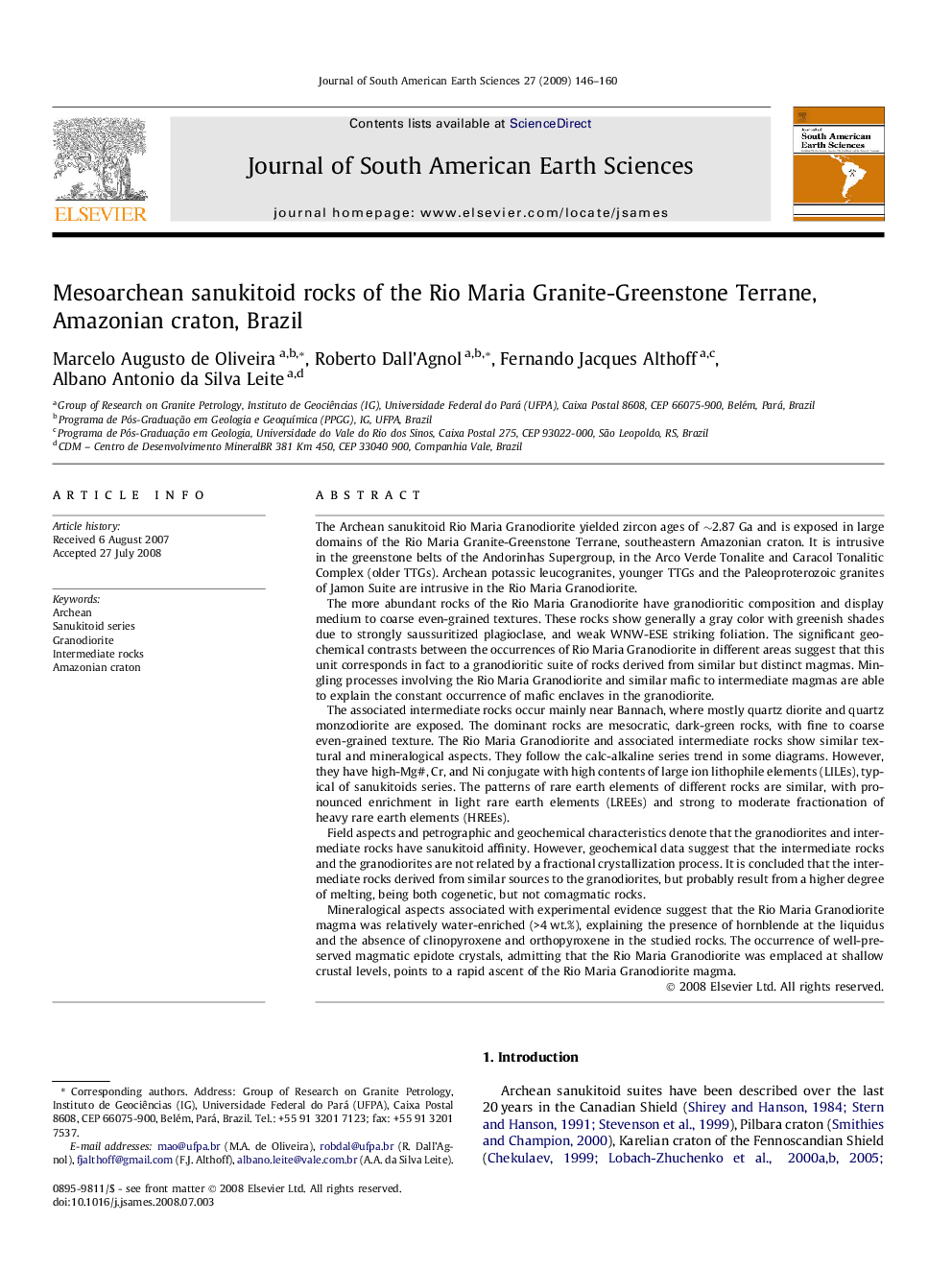| کد مقاله | کد نشریه | سال انتشار | مقاله انگلیسی | نسخه تمام متن |
|---|---|---|---|---|
| 4682920 | 1635178 | 2009 | 15 صفحه PDF | دانلود رایگان |

The Archean sanukitoid Rio Maria Granodiorite yielded zircon ages of ∼2.87 Ga and is exposed in large domains of the Rio Maria Granite-Greenstone Terrane, southeastern Amazonian craton. It is intrusive in the greenstone belts of the Andorinhas Supergroup, in the Arco Verde Tonalite and Caracol Tonalitic Complex (older TTGs). Archean potassic leucogranites, younger TTGs and the Paleoproterozoic granites of Jamon Suite are intrusive in the Rio Maria Granodiorite.The more abundant rocks of the Rio Maria Granodiorite have granodioritic composition and display medium to coarse even-grained textures. These rocks show generally a gray color with greenish shades due to strongly saussuritized plagioclase, and weak WNW-ESE striking foliation. The significant geochemical contrasts between the occurrences of Rio Maria Granodiorite in different areas suggest that this unit corresponds in fact to a granodioritic suite of rocks derived from similar but distinct magmas. Mingling processes involving the Rio Maria Granodiorite and similar mafic to intermediate magmas are able to explain the constant occurrence of mafic enclaves in the granodiorite.The associated intermediate rocks occur mainly near Bannach, where mostly quartz diorite and quartz monzodiorite are exposed. The dominant rocks are mesocratic, dark-green rocks, with fine to coarse even-grained texture. The Rio Maria Granodiorite and associated intermediate rocks show similar textural and mineralogical aspects. They follow the calc-alkaline series trend in some diagrams. However, they have high-Mg#, Cr, and Ni conjugate with high contents of large ion lithophile elements (LILEs), typical of sanukitoids series. The patterns of rare earth elements of different rocks are similar, with pronounced enrichment in light rare earth elements (LREEs) and strong to moderate fractionation of heavy rare earth elements (HREEs).Field aspects and petrographic and geochemical characteristics denote that the granodiorites and intermediate rocks have sanukitoid affinity. However, geochemical data suggest that the intermediate rocks and the granodiorites are not related by a fractional crystallization process. It is concluded that the intermediate rocks derived from similar sources to the granodiorites, but probably result from a higher degree of melting, being both cogenetic, but not comagmatic rocks.Mineralogical aspects associated with experimental evidence suggest that the Rio Maria Granodiorite magma was relatively water-enriched (>4 wt.%), explaining the presence of hornblende at the liquidus and the absence of clinopyroxene and orthopyroxene in the studied rocks. The occurrence of well-preserved magmatic epidote crystals, admitting that the Rio Maria Granodiorite was emplaced at shallow crustal levels, points to a rapid ascent of the Rio Maria Granodiorite magma.
Journal: Journal of South American Earth Sciences - Volume 27, Issues 2–3, February–March 2009, Pages 146–160